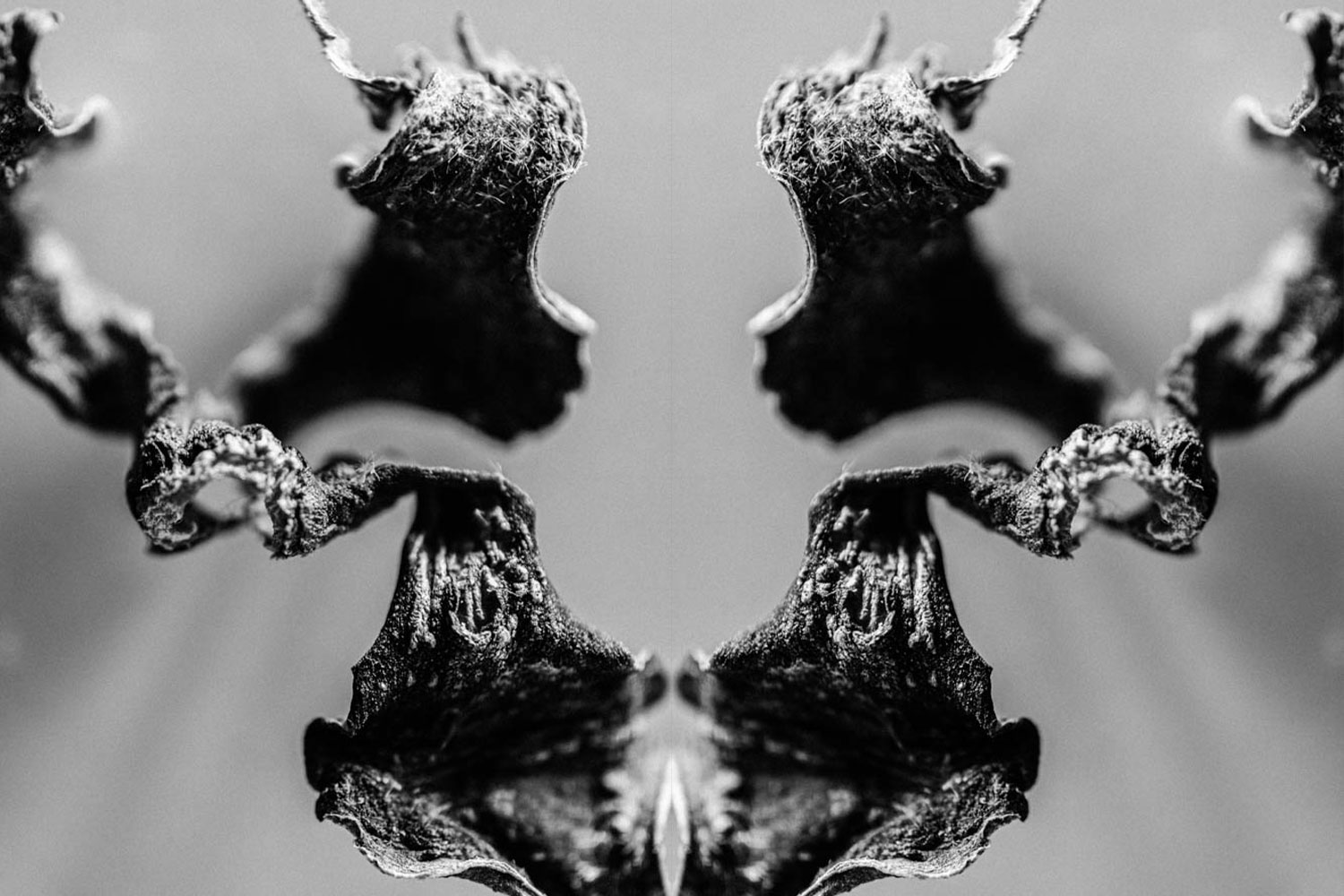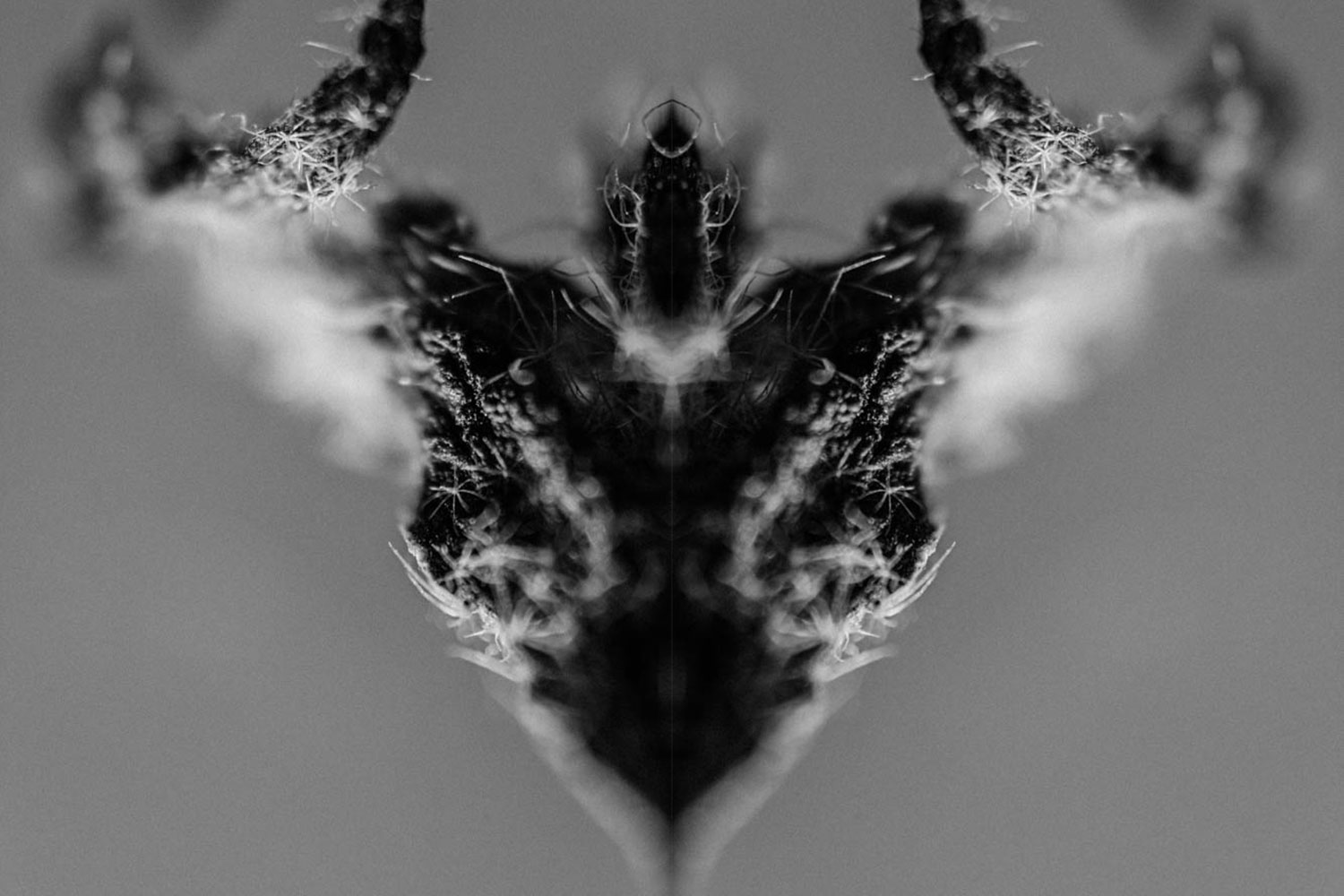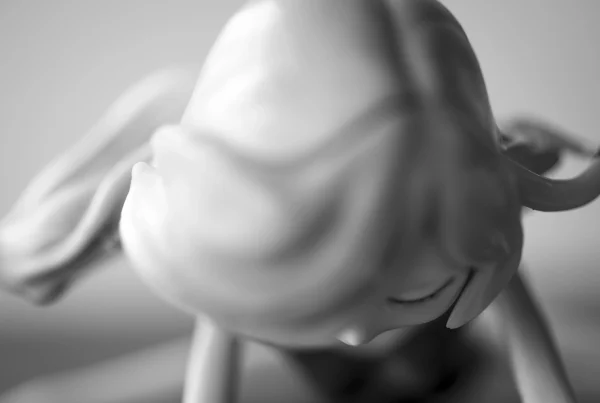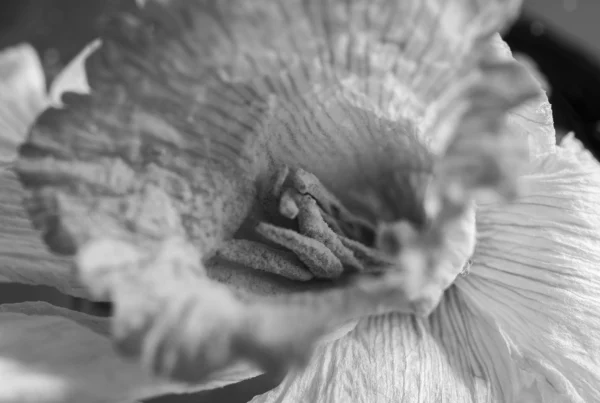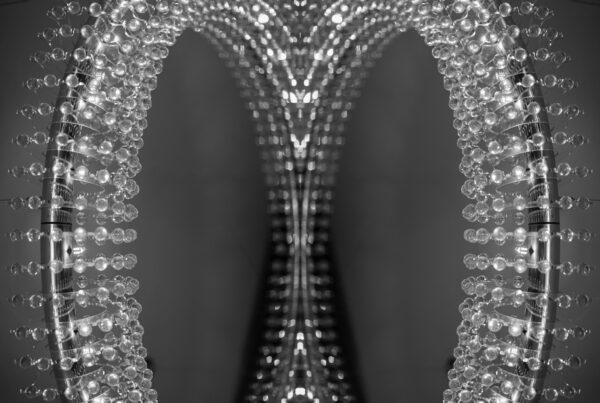Mythological Creatures
This series of photographs began with a spongy, purple aubergine stem, which morphed into a mythological creature as it decayed. I cut the stem off and placed it on a large northwest-facing window ledge to catch the afternoon sunlight. However, given Malaysia’s high humidity levels (between 74% to 86%), the sunlight didn’t significantly affect the drying process. Instead, the Aubergine stem decayed rapidly, developing mould spores.
Using a specialist macro lens, I documented the transformation, capturing intricate close-up details. The lens allowed me to creatively experiment with sharp and soft focus points, adding a selective blur effect to certain areas of the image.
Working with the Pareidolia Effect
Phase 1:
At first, the image remains amorphous – a mystery waiting to be explored. It’s a puzzle, and I never know exactly what the photograph will reveal or if mirroring the image will create a compelling, evocative narrative.
Phase 2:
This is the most exciting phase, where I mirror the image to see what unfolds. Sometimes, the result is magical, revealing what I call ‘Mystical Scapes,’ or ‘Mystical Beings‘. In this particular case, the mirrored aubergine stem transformed into mythological creatures, appearing to wear costume headgear or, in another interpretation, having horns like those of a goat, or ram jutting from their skulls.
What do you see in this image? Does it evoke the same mythical imagery for you?
